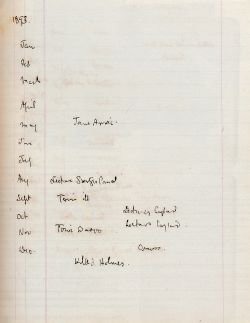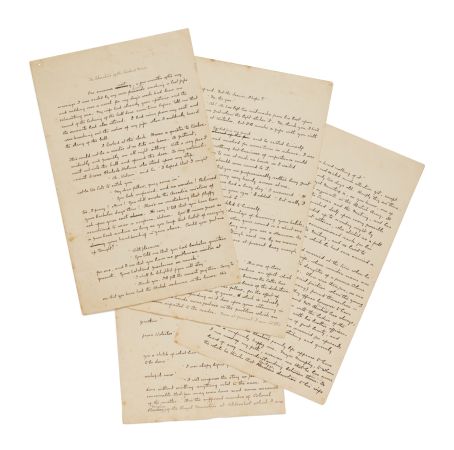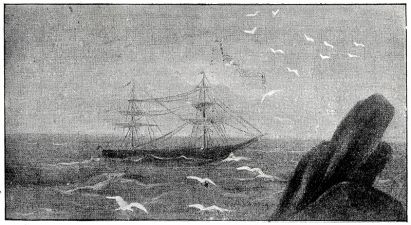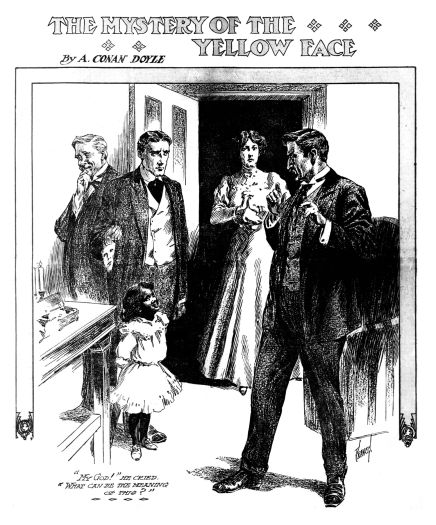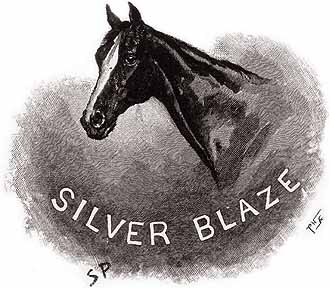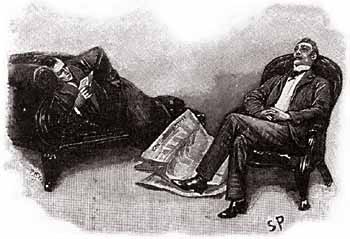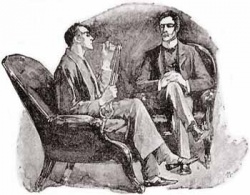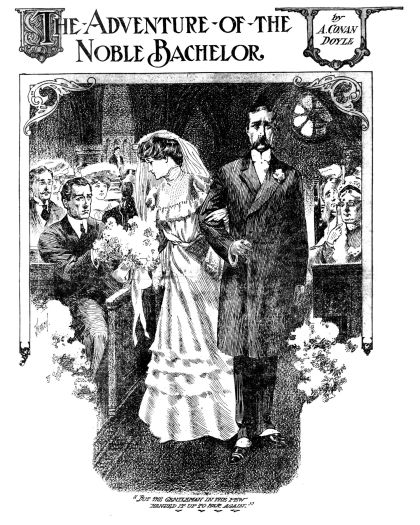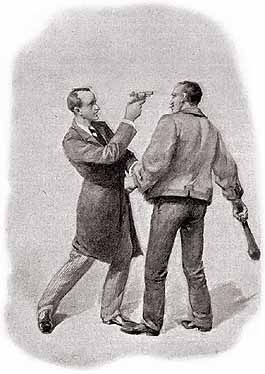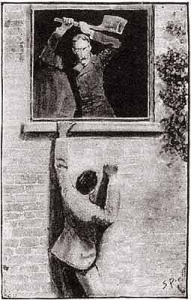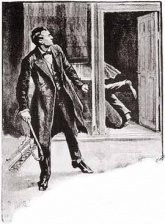"The Adventure of the Reigate Squire" was published in
The Strand in June 1893.
I really like this story. It starts out with Holmes working himself to death in France and needed to go to the English countryside for a rest. He and Watson go to the home of Colonel Hayter (Watson's former patient) and get entangled in a case of local burglaries.
So, in the beginning, Doyle states that Holmes' hotel room was 'ankle-deep' in congratulatory telegrams on the success of the financial case he works himself to collapse about and someone (Carol P. Woods) has calculated that it would require 10,741 telegrams to do that and so claims that it wasn't the case that fatigued Holmes but the crumpling of ten thousand telegrams :)
I really love this illustration (by Gaston Simoes da Fonseca (Félix Juven, 1909):
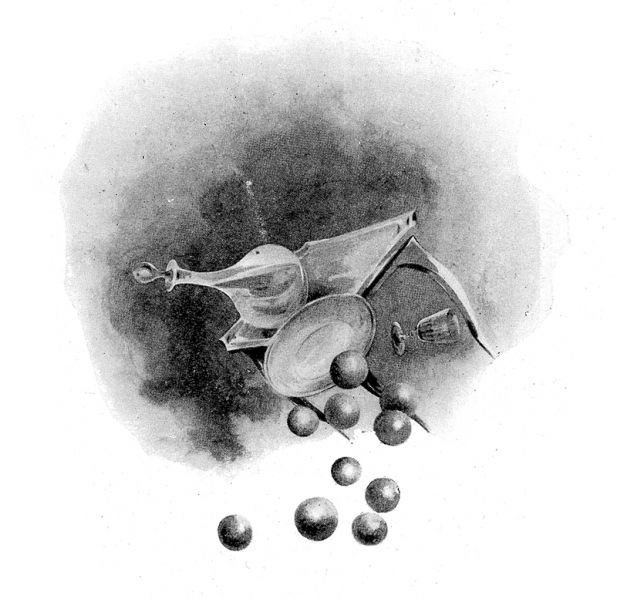
So the solution to the case has Holmes delving into the graphology (or the study of handwriting) and he claims there are 23 more deductions he could've made from the unusual letter in the case. And someone (John Bell Jr.) has named them all:
1. The quality of the paper – costly, average, or cheap
2. The rag content of the paper.
3. Where the paper came from.
4. The quality of the ink.
5. The chemical nature of the ink.
6. Where the ink came from.
7. The age of the writing.
8. Was the paper folded? If so, how?
9. Had the fragment been torn from the whole, or the
whole from the fragment?
10. Was the tear started at the bottom or the top?
11. Was the first penman right or left-handed?
12. Was the second penman was right or left-handed?
13. The type of pen used.
14. Did both penmen use the same pen?
15. The size of the sheet of paper from which the frag
ment came.
16. Was the original sheet of paper notepaper, wrapping
paper, or what?
17. Were there any erasures on the paper?
18. Had the writing been blotted between writings?
19. Had the writing been blotted after the second
writing?
20. Did both penmen use the same ink supply?
21. Were there fingernail marks made when the paper
was torn?
22. Was there any scent on the paper?
23. Were there any other marks or stains on the paper?
One of the best stories I've written involved Holmes, Watson, and Colonel Hayter. I wrote it for Spook Me 2016:
Ghost Stories (4318 words) by
okapiChapters: 6/6
Fandom:
Sherlock Holmes & Related Fandoms,
Sherlock Holmes - Arthur Conan DoyleRating: Teen And Up Audiences
Warnings: Major Character Death
Relationships: Sherlock Holmes/John Watson, Sherlock Holmes & John Watson
Characters: Sherlock Holmes, John Watson, Colonel Hayter, Mycroft Holmes
Additional Tags: Ghosts, Alternate Universe - Ghosts, Suicidal Thoughts, Shipwrecks, Trains, Storytelling, Community: spook_me
Series: Part 7 of
Spooky & Kooky (the Halloween fics)Summary:
Holmes, Watson, and Colonel Hayter (of "The Reigate Squires") tell ghost stories by the fire.
ACD. For the LJ Spook Me Ficathon.

